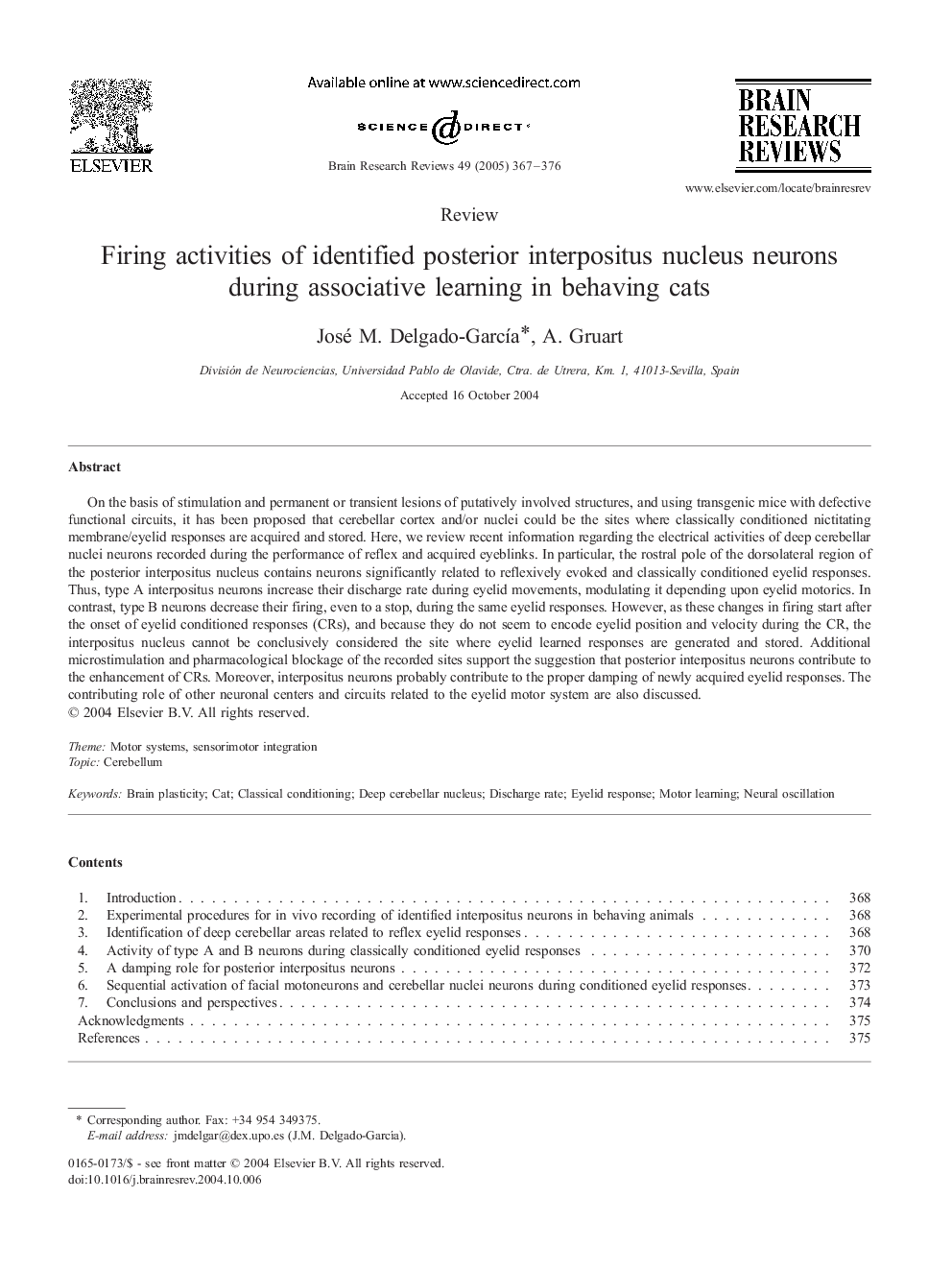| کد مقاله | کد نشریه | سال انتشار | مقاله انگلیسی | نسخه تمام متن |
|---|---|---|---|---|
| 9423090 | 1294770 | 2005 | 10 صفحه PDF | دانلود رایگان |
عنوان انگلیسی مقاله ISI
Firing activities of identified posterior interpositus nucleus neurons during associative learning in behaving cats
دانلود مقاله + سفارش ترجمه
دانلود مقاله ISI انگلیسی
رایگان برای ایرانیان
کلمات کلیدی
CATBrain plasticity - انعطاف پذیری مغزMotor systems and sensorimotor integration - سیستم های موتور و ادغام سنسور حرکتیClassical conditioning - شرطیشدن کلاسیک، شرطیشدن واکنشی، شرطیشدن نوع ICerebellum - مخچهDischarge rate - میزان تخلیهNeural oscillation - نوسان عصبیdeep cerebellar nucleus - هسته مغناطیسی عمیقMotor learning - یادگیری حرکتی
موضوعات مرتبط
علوم زیستی و بیوفناوری
علم عصب شناسی
علوم اعصاب (عمومی)
پیش نمایش صفحه اول مقاله

چکیده انگلیسی
On the basis of stimulation and permanent or transient lesions of putatively involved structures, and using transgenic mice with defective functional circuits, it has been proposed that cerebellar cortex and/or nuclei could be the sites where classically conditioned nictitating membrane/eyelid responses are acquired and stored. Here, we review recent information regarding the electrical activities of deep cerebellar nuclei neurons recorded during the performance of reflex and acquired eyeblinks. In particular, the rostral pole of the dorsolateral region of the posterior interpositus nucleus contains neurons significantly related to reflexively evoked and classically conditioned eyelid responses. Thus, type A interpositus neurons increase their discharge rate during eyelid movements, modulating it depending upon eyelid motorics. In contrast, type B neurons decrease their firing, even to a stop, during the same eyelid responses. However, as these changes in firing start after the onset of eyelid conditioned responses (CRs), and because they do not seem to encode eyelid position and velocity during the CR, the interpositus nucleus cannot be conclusively considered the site where eyelid learned responses are generated and stored. Additional microstimulation and pharmacological blockage of the recorded sites support the suggestion that posterior interpositus neurons contribute to the enhancement of CRs. Moreover, interpositus neurons probably contribute to the proper damping of newly acquired eyelid responses. The contributing role of other neuronal centers and circuits related to the eyelid motor system are also discussed.
ناشر
Database: Elsevier - ScienceDirect (ساینس دایرکت)
Journal: Brain Research Reviews - Volume 49, Issue 2, September 2005, Pages 367-376
Journal: Brain Research Reviews - Volume 49, Issue 2, September 2005, Pages 367-376
نویسندگان
José M. Delgado-GarcÃa, A. Gruart,